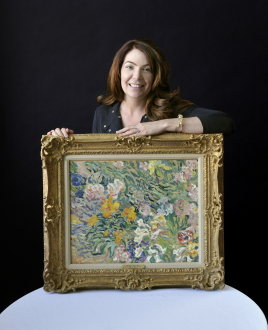“Location, location, location.” It’s the oft-repeated mantra of the real-estate business.
There is no better example of that saying than Stamford. It’s the state’s second-largest city by population and a dynamic business hub — second in the metro region only to the New York City — that is all about location. On the shore of Long Island Sound and half-way between the Big Apple and New Haven, Stamford’s motto is “The City That Works,” and does it ever. It hosts one of the largest concentrations of corporations in the United States. It’s home to Fortune 500 companies, as well as a galaxy of divisions of leading companies in financial services, information technology, health care and telecommunications, among others.
From the 1860s to 1948, the largest employer in Stamford was the Yale & Towne Manufacturing Co. After Linus Yale Jr. invented the tumbler lock, his factory became the world’s largest producer of locks. Another early local business success was the Schick electric razor, patented in 1930 by Col. Jacob Schick and produced in Stamford until at least 1955. (Today the site is operated by another personal-care powerhouse, Phillips Norelco.)
Stamford was settled early in New England’s history. Its deed with the Native American Chief Ponus was signed in 1640. The sleepy little farming community had a rare dramatic moment with its witch trial in 1692. (See story on the Stamford nobody knows on Page 18.) In the 18th century, Stamford slowly grew to become a trading outpost, due to its easy water access to the much larger and far more important port of New York as well as the New England commercial harbors to the north.
The proximity to Manhattan, the financial heart of the country’s (and increasingly the world’s) economy was the basis of the real estate boom that started in the later 19th century. Then as now, city dwellers yearned to get away from the urban bustle, at first for just a part of the year. Wealthy New Yorkers built summer homes on Stamford’s shore, which beckoned to lovers of water sports. As the railroads developed, frequent train service made it practical to commute daily to Manhattan and, by the mid-20th century, Stamford had become the prosperous city it is today.
As usually happens when an area grows rapidly, signs of its past are swiftly erased by new development. Few traces remain of early Stamford. The Stamford area today is noted for its mid-20th century architecture. The First Presbyterian Church, nicknamed the Fish Church for its design by architect Wallace K. Harrison, and the angular wood and glass Glen House by Richard Neutra — which came onto the market in 2020 at $4.5 million — are outstanding examples of the city’s mid-century Modern vibe.
The adjacent town of New Canaan, a part of Stamford until the early 19th century, became known for innovative homes designed by the Harvard Five — John M. Johansen, Marcel Breuer, Landis Gores, Philip Johnson and Eliot Noyes. From the late 1940s through the 1960s, these stars of the Harvard University Graduate School of Design built more than 80 homes in the town. Their hallmark was open floor plans and innovations in materials, as epitomized in Philip Johnson’s The Glass House, now a New Canaan museum that has been reinterpreted in recent years to counter Johnson’s early racist views.
The area’s influential residences make this corner of Connecticut a magnet for architecture — and auction — buffs alike, as a pair of Breuer “Wassily” chairs in tubular chromed steel and stitched brown leather, sold at Skinner Inc. for $1,875 in 2020, attests. (Like many 20th-century architects, Breuer designed furniture to complement his buildings.)
A rich past, a vibrant present, a promising future: Stamford is where it’s at. And this is all because of where it’s at.
For more, contact Katie at kwhittle@skinnerinc.com or 212-787-1114.





